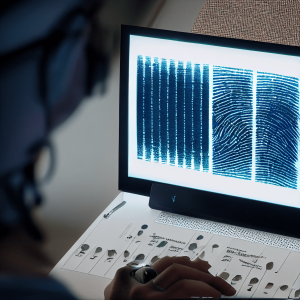Forensic video analytics is the use of computer software and algorithms to analyse video footage for the purpose of identifying and extracting evidence that can be used in a legal investigation. This can include analysing the movements and actions of individuals in the video, identifying objects or features of interest, and using facial recognition technology to identify individuals.
Forensic video analytics can be used in a variety of situations, such as investigating crimes, analysing traffic accidents, or identifying potential security threats. The software can be used to process large amounts of video data quickly and accurately, allowing investigators to identify patterns and trends that may not be immediately apparent to the human eye.
Forensic video analytics can be a valuable tool for law enforcement and other organisations, as it allows them, quickly and efficiently analyze large amounts of video data to identify potential leads and evidence. However, it is important to ensure that the software is used ethically and in accordance with al current laws and regulations, as well as to consider any potential biases or errors that may be introduced by the technology.
Frequent uses of forensic video analytics
One common use of forensic video analytics is in crime investigations. For example, investigators may use the software to analyse surveillance footage from a robbery or other crime to identify the perpetrators or track their movements before and after the crime.
Forensic video analytics can also be used to analyse traffic accidents. By analysing video footage from traffic cameras or other sources, investigators can determine the cause of an accident and identify any contributing factors.
In addition to law enforcement, forensic video analytics can also be used by organisations to identify potential security threats. For example, a company may use the software to analyse video footage from security cameras to identify individuals who may be behaving suspiciously or attempting to gain unauthorised access to a facility.
It is important to note that forensic video analytics is not a replacement for human analysis and judgment, and it should be used in conjunction with other investigative techniques.
There are potential ethical and legal implications to consider when using forensic video analytics. For example, there may be concerns about privacy if the software is used to analyse footage of individuals in public places. It is important to ensure that the software is used in a manner that is consistent with relevant laws and regulations.

Streaming or live?
Actually, any video platform with AI modules can work with both. However, the term “forensic” is usually applied only to things that have already happened and (in this particular case) were recorded. This allows you not only to compare different video sources, but also go back in time over a certain period (ranging from 24 hours to a week, depending on the system’s storage capacity). And here resides the really important point: making an AI look for specific data, faces or objects is feasible. Having a series of officers do the work by watching recordings, is not. Hence, using live feeds is posible, but the real insight lies in past recordings, to be compared with current information or developments automatically.
Conclusions
In conclusion, forensic video analytics is a powerful tool that can be used to extract evidence and identify patterns and trends in video footage. Whether used in crime investigations, traffic accidents, or security threats, the software allows organisations to quickly and efficiently analyse large amounts of video data to identify potential leads and evidence. However, it is important to use the technology ethically and in accordance with relevant laws and regulations, and to consider any potential biases or errors that may be introduced by the software. Ultimately, forensic video analytics can be a valuable addition to an organisation’s toolkit, but it should be used in conjunction with other investigative techniques and human analysis.
